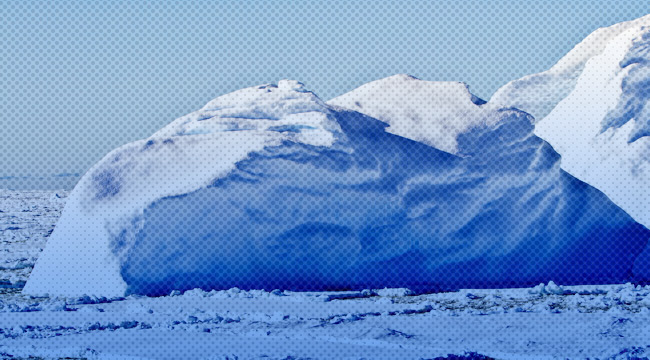
This morning, a trillion-ton iceberg finally calved off of Antarctica. Named A-68, and breaking off from the Larsen ice shelf, scientists have been watching it for years and indeed, this is the most closely watched iceberg in human history. And while it doesn’t appear to be caused by climate change, it is a warning of what might come.
A-68 comes from the Larsen Ice Shelf, a peninsula of Antarctica made entirely of ice, divided into several different sub-shelves lettered as A, B, C, up to G. Think of Larsen like a giant ice cube that sits on the ocean. Larsen serves as a sort of global thermometer, as the warmer the ocean becomes, the faster it tends to shed ice. Larsen B stunned scientists in 2002 when it almost completely disintegrated in the space of a month, and it sharpened focus on climate change issues.
What happened at Larsen C was less dramatic, in terms of timing if not scale. Cracks first began appearing in 2014, precisely a decade after scientists warned that Larsen was stable, for now, but that Larsen C might collapse in the following decade. Scale was another matter; there were cracks appearing on Larsen C that could only be crossed with airplanes. Once the cracks began to appear, it was simply a question of when.
The immediate effects of A-68 are fairly minimal. The main concern of melting glaciers, from a global perspective, is that the meltwater will flow into the sea and raise sea levels. That doesn’t apply to A-68, because it had already been in the water, and that won’t change as it melts. In the short term, the main question is whether it will break up, causing problems in shipping, or stay closer together in Antarctica’s colder waters. And, despite the size, scientists are reluctant to chalk this up just to climate change. Ice shelves are supposed to calve icebergs, although it’s rare they calve ones twice the size of Luxembourg.
The problems are more long-term. Losing a chunk of ice the size of Delaware from Larsen C permanently changes the Antarctic peninsula, and while it doesn’t contribute to climate change directly, it might have dangerous long term effects. Ice shelves like Larsen serve as dams for glaciers and meltwater further inland, keeping it from flowing directly into the ocean and forming more mass off the water. Without that dam in place, those glaciers can melt directly into the ocean, raising sea levels.
Another problem is that ice shelves also protect those glaciers from the warming, melting effects of the ocean. The less of them there are, the more and faster those glaciers will melt. In other words, not only does losing ice shelves lead to rising sea levels, those sea levels might rise much faster than predicted.
And, of course, the less ice a shelf has, the more concentrated the effects of warmer waters and air. The main question for scientists now is how quickly Larsen C might collapse, leaving the much smaller shelves of D through G to try and handle the forces around them. In short, by itself, Larsen C losing an iceberg isn’t the biggest of deals. But it’s a moment that reminds us we need to act on climate change before simple physics forces our hands.






